La collection Schickler-Pourtalès, le 16 mai prochain chez Sotheby's Paris
Le château de Beaurepaire, propriété de la dynastie Schickler – Pourtalès.
Paris – Sotheby’s a le plaisir d’annoncer la vente de la collection Schickler-Pourtalès, le 16 mai prochain à Paris. Issu d’une puissante dynastie de banquiers berlinois installés en France, le baron Arthur de Schickler (1828-1919) acquiert en 1867 le château de Beaurepaire, situé près de Cherbourg dans l’ancienne seigneurie de Martinvast. Collectionneur érudit et passionné, il le décore richement et achète tapisseries, sculptures et objets d’art datant des XVIe et XVIIe siècles.
Dynastie Schickler – Pourtalès | Art et Pouvoir
Les Schickler sont d’origine suisse, du canton de Bâle, mélangés d’ancêtres alsaciens de la région de Mulhouse. En 1795, Johan Schickler épouse Ernestina Splitgerber, héritière de la banque prussienne du même nom qui existe depuis 1712. A sa mort, en 1801, son fils Jean Georges, hérite une fabuleuse fortune. L’histoire de la famille Schickler restant à écrire, il est assez difficile de déterminer pourquoi Jean Georges choisit de s’installer en France.
Le fils aîné de Jean Georges, Arthur, banquier de la famille Prusse à Berlin, achète Martinvast en 1867. Amoureux du passé, Arthur, qui est fait Baron de Schickler en 1870, créé dans son château ce décor étonnant conservé par ses descendants jusqu’à nos jours. Le travail est confié à un architecte britannique William Henry White, qui a déjà restauré Bizy pour Fernand de Schickler. Il en fait une folie néogothique aux accents victoriens.
Membre éminent du Jockey Club, fondateur du comité des courses avec le prince Murat et le baron Gustave de Rothschild, Arthur de Schickler partage son temps entre Martinvast et son impressionnant hôtel particulier sis 17, place Vendôme – aujourd’hui le Ritz. Sa fille Marguerite épousera en 1890 le comte Hubert de Pourtalès, petit-fils du comte James de Pourtalès-Gorgier, chambellan du roi de Prusse et propriétaire d’une des plus belles collections d’antiques et de tableaux de son temps.
Arthur de Schickler va créer une magnifique collection comprenant tapisseries, sculptures, objets d’art et également des portraits de famille. La collection, préservée dans le château par son arrière-petit-fils Christian de Pourtalès (1928 – 2018), porte le cachet du lieu et l’empreinte secrète d’une dynastie de collectionneurs.
Redécouverte de deux exceptionnels Putti | Chefs-d’œuvre de la Renaissance allemande
Deux exceptionnels Putti, chefs-d’œuvre de la Renaissance allemande, réalisés par Hans Daucher vers 1525-1530, ornaient autrefois la balustrade de la chapelle de la prestigieuse famille Fugger, aux côtés d'autres anges, aujourd'hui conservés au Maximilianmuseum, à Augsbourg (Estimation sur demande).
Puissants marchands et banquiers, les Fugger s’établissent dès la fin du Moyen Âge à Augsbourg, d’où ils dominent la finance européenne tout au long de la Renaissance. En 1509, les frères Ulrich et Jacob Fugger décident d’ériger une chapelle familiale, à la mémoire de leur frère Georges. Ce sera l’un des premiers exemples d’architecture de la Renaissance allemande réalisée à la manière italienne. La richesse du décor réalisé par les meilleurs artisans de la région témoigne du pouvoir et de l’influence de la famille Fugger.
Les putti occupent une place d'honneur dans le programme iconographique au centre de la chapelle sur la balustrade, tout à fait novatrice à l'époque. Daucher s’est certainement inspiré de modèles d’Albrecht Dürer, comme la Nativité du Paumgartner Altar, 1498-1504, où les putti, au centre de la composition, montrent, comme les nôtres, leur postérieur. Appuyés sur un globe, ils évoquent également le sujet de la Vanité ou Memento Mori, indiquant le caractère éphémère de la vie, représentation en vogue à l’époque.
En 1817, à l’occasion du tricentenaire de la Réforme et de la visite de Luther à Augsbourg, la ville entreprend des travaux de modernisation lors desquels la chapelle est démantelée : la balustrade en marbre polychrome et les sculptures sont entièrement dispersées. C’est certainement à cette époque que ces deux putti apparurent sur le marché et que le baron Arthur de Schickler a pu les acquérir.
Cent ans plus tard, en 1921, le comte Karl Ernst Fugger von Glött reconstitue la chapelle dans son état d’origine et entreprend la recherche des œuvres perdues. Il ne retrouvera jamais ces deux sculptures, qui nous parviennent aujourd’hui dans un état de conservation exceptionnelle. Conservés pendant plus de quatre générations au château de Martinvast, ces deux putti font incontestablement partie de la série originale. Témoignages du prestige de la collection Schickler-Pourtalès, ils sont les deux ultimes chefs d’œuvre de cet ensemble, parfaitement documenté de la Renaissance allemande.
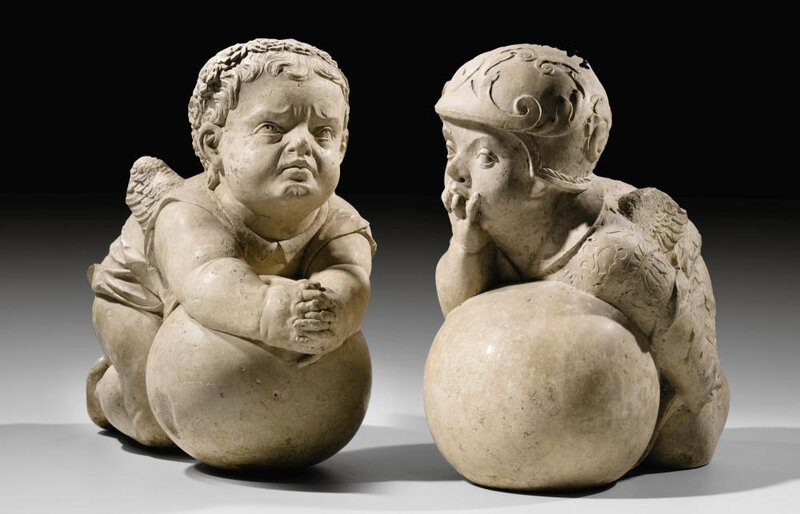
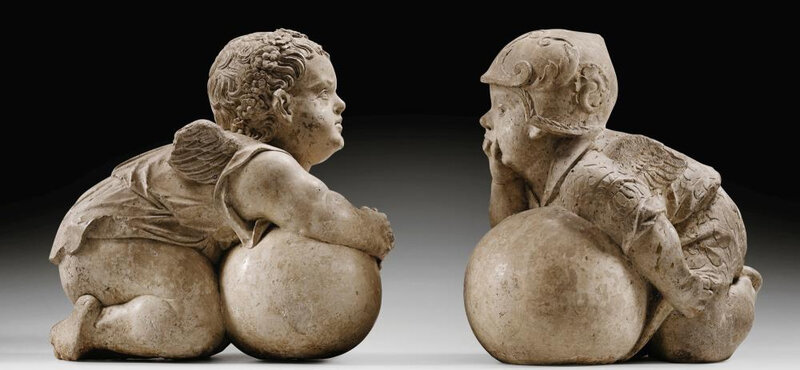







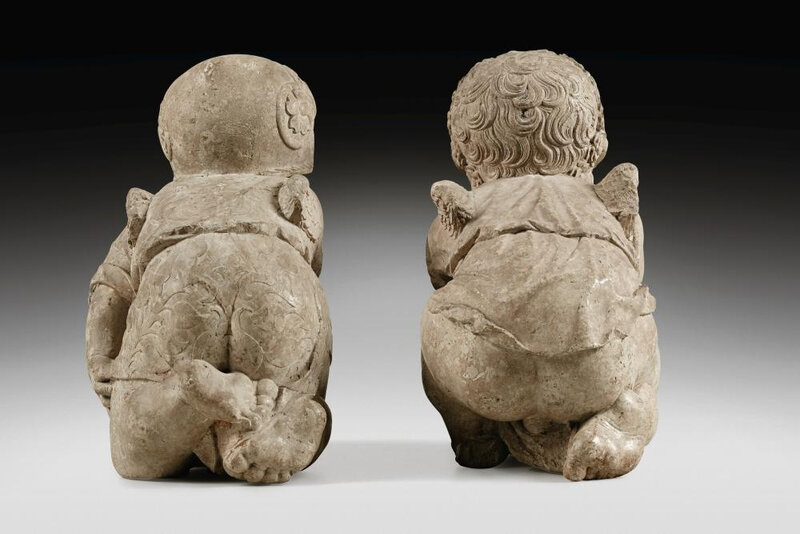

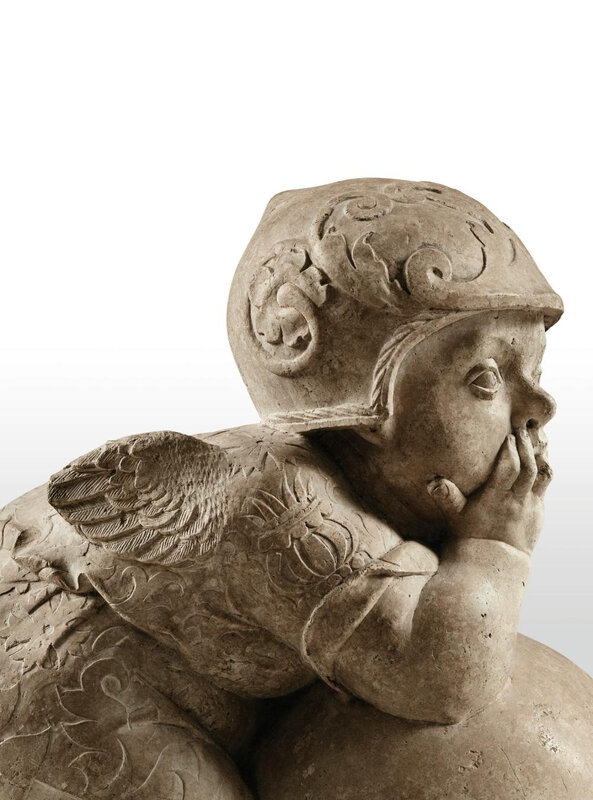




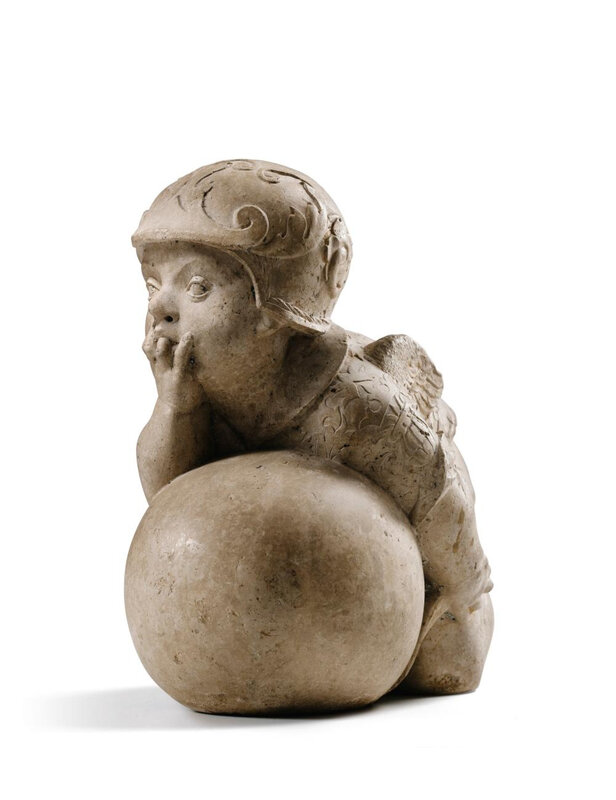
Lot 35. Hans Daucher (1486-1538), South German, Augsburg, circa 1525-1530. An Important Pair of Putti, limestone, stone, 29 x 27 x 15,5 cm and 27 x 28 x 15 cm; 11 1/2 x 10 1/2 x 6 in. and 10 1/2 x 11 x 5 3/4 in. Estimate Upon Request. Courtesy Sotheby's.
Provenance: Fugger chapel, St. Anna, Augsburg, circa 1525-1530, dismantled in 1821;
acquired by Baron Arthur de Schickler (1828-1919);
thence by family descent to the present owners, château de Martinvast;
Literature: P. M. Halm, Adolf Daucher und die Fuggerkapelle bei St. Anna in Augsburg, Studien zur Fugger-Geschichte, t. VI, Munich/Leipzig, 1921;
N. Lieb, Die Fugger und die Kunst im Zeitalter der Spätgotik und frühen Renaissance, mit einem Exkurs: Die Bildhauer der Fugger-Kapelle bei St. Anna zu Augsburg.(Studien zur Fuggergeschichte, vol. 10), Munich, 1952;
J. Rasmussen, Kunz von der Rosen in der Fuggerkapelle, in: Zeitschrift des deutschen Vereins für Kunstwissenschaft, t. XXXVIII, no.1/4 (1984), pp. 47-53;
B.Bushart, Die Fuggerkapelle bei St. Anna in Augsburg, Munich, 1994;
T. Eser, Hans Daucher Augsburger Kleinplastik der Renaissance, Munich, 1996.
These magnificent putti are masterpieces of the German Renaissance. Recognized as works by Hans Daucher around 1525-1530, they once decorated the balustrade of the chapel of the prestigious Fugger family in Augsburg, alongside a number of other putti, which are today displayed in the Maximilian Museum, Augsburg. Lost for nearly two centuries after the church was dismantled in 1821, the discovery of these sculptures in the Schickler-Pourtales collection in Martinvast is a major event for collectors and art historians.
The History of the Fugger chapel
The Fugger chapel (fig. 4) is the first and most influential example of Italianate Renaissance architecture in Germany, executed to the highest standards and reflecting the Fugger family's power, influence and taste. The Fugger are a prominent family of European bankers, members of the mercantile patrician residents in Augsburg since the early 15th century. Alongside the Welser family, the Fugger took over parts of the operations of the Medici banking dynasty, controlling much of the European economy and accumulating enormous wealth.
On 7th April 1509, Ulrich and Jacob Fugger made an agreement with the Prior of the Carmelite monastery of St Anne in Augsburg to erect a large sepulchral chapel at the west end of the church for themselves and their brother George, who died in 1506. Ulrich Fugger died in 1510, so it was left to Jacob the Rich, the eldest brother, to oversee the completion of the work (fig. 5). The Fugger brothers’ plans were exceptional and ambitious. In 1517, it was recorded that Jacob Fugger had already spent 23,000 Florins for the building works. Dedicated in 1518, the entire decoration contributed to the powerful overall impact of the chapel with its ribbed vaults, patterned polychrome marble pavement, stained glass, organ, and wooden choir stalls. The important altarpiece in the centre of the chapel, surmounted by the group of the Descent from the Cross, with a predella formed of three stone reliefs was sculpted by Hans Daucher. The three tombs of the Fugger brothers, whose epitaphs were designed after compositions by Dürer, are set in the wall of the apse behind the altar.
The chapel had a turbulent history and suffered from change and destruction since the Reformation and Luther's visit to Augsburg. In 1817, on the occasion of the tercentenary celebrations of the Reformation, the chapel was again modernised and disastrously vandalised, when it lost most of its moveable decoration: the altarpiece was removed, the marble balustrade destroyed, and the sculptures dismantled and dispersed. An inventory established by Anton Cavallo, the administrator of the Fuggers, in 1821 mentions ‘six stone angel’s heads’ which, despite the lack of precise correlation, has been linked with our putti. The choir stalls were destroyed in 1832. The 16 pearwood busts which decorated the stalls were removed, and, interestingly, fifteen of them were given in 1848/50 by the renowned art collector S.A. Alexander Minutoli to the museum in Berlin, where only three of them have survived today. It is tempting to suppose that Baron Schickler acquired the two putti for his collection at this time, in a similar manner to Minutoli.
One hundred years later, in 1921, the Fugger family decided to reconstruct the chapel. Philipp Maria Halm, at the time curator of the Bayerisches Nationalmuseum in Munich, discovered five of the lost putti not far from Augsburg: three of them in the garden of the Fugger hunting lodge in Lauga, a fourth putto (the one holding a sheet of music) in Wertingen, which was bought back for 800 marks, and a fifth putto in a garden in Friedberg, belonging to a certain Josef Trinkl, who sold the piece after long negotiations for 6 000 marks. We also know from Rasmussen (op.cit., p. 47) that the sixteenth pearwood bust from the stalls was acquired by Albert Figdor in a private collection in Augsburg (today in the Museum of Fine Arts in Boston).
Retable de la vie de Saint Lambert, Brabant, XVIe siècle
Cet important ensemble représentant la vie de Saint Lambert (Estimation : 100.000 – 150.000€ - détail ci-contre) formait la partie centrale d’un triptyque à deux volets peints caractéristique de la production de Brabant au tournant du XVIe siècle. La division narrative du retable de Martinvast, en plusieurs espaces cloisonnés dans une architecture d'églises gothiques, est typique de cette production. Son iconographie, en revanche, est plus rare.
Alors que la plupart des retables brabançons traitent de l’Enfance, de la Passion du Christ ou encore de la Vie de la Vierge, le retable de Martinvast est dédié à Saint Lambert, évêque de Liège-Maastricht et ardent défenseur de la fidélité conjugale. Il est donc plausible qu'il soit issu d’une commande spécifique pour l’une des églises de ce puissant évêché, probablement la cathédrale détruite de Liège, placée sous le double patronage de la Vierge et de Saint Lambert.
Après son acquisition par Hubert de Pourtalès au milieu du XIXe siècle, il fut exposé dans la galerie du château de Martinvast. Le 14 janvier 1944, lors des bombardements anglais et américains sur le Cotentin, le retable a pu miraculeusement être sauvé de l'incendie qui a partiellement détruit le château.
Lot 28. Southern Netherlandish, Brabant, circa 1530, Altarpiece with scenes from the life of Saint Lambert, oak, 192 x 210 x 35.5 cm; 75 1/2 x 82 5/8 x 14 in. Estimate 100,000 — 150,000 €. Courtesy Sotheby's.
the caisse crowned by a moulded pediment divided into seven compartments, the upper register surmounted by pierced Gothic arches and choux frisés friezes, each span flanked by vertical appliques in the form of candelabra with figures of the Virgin, Saint John and two bishops, the lower registers of the two lateral spans carved with scrollwork and the profile of a woman in a medallion.
Provenance: Sold by the Alliance des Arts, Paris, in 1847, together with an altarpiece dedicated to the Virgin, now preserved in the Victoria and Albert Museum, London (inv. no. 1049-1855), both reputed to come from Saint Bavo Cathedral, Ghent, and purchased by a Parisian dealer;
Paris art market, circa 1854;
acquired in London by Hubert de Pourtalès (1863-1949), according to family tradition.
Literature: P. Lacroix, F. Seré, Le Moyen Age et la Renaissance, Paris, 1848-51, vol. IV, pl. 15; H. Saint Sauveur, Châteaux de Normandie, Paris, circa 1930, pl. 38; P. Williamson, Netherlandish Sculpture, 1450-1550, Victoria and Albert Museums, London, 2002, pp. 24-25, 70-73, 80-83; K. Woods, Imported Images: Netherlandish Late Gothic Sculpture in England, circa 1400-circa 1550, London, 2007, pp. 143-147.
Note: This exceptional ensemble was the central part of a triptych with painted wings, typical of altarpieces from the Brabant region of the Netherlands, between 1460 and the first third of the 16th century. The narrative of the Martinvast altarpiece, divided into several scenes integrated in an architectural background reminiscent of chapel architecture, is characteristic of this production. The iconography, however, is more rare. While most Netherlandish altarpieces depict scenes from the Childhood of Christ, the Passion of Christ or the Life of the Virgin, this altarpiece is dedicated to Saint Lambert, Bishop of Liège-Maastricht and staunch defender of the fidelity of marriage and it is feasible that it was commissioned for one of the churches of this powerful bishopric. The lack of a town mark stamped on the figures prevents us from identifying, with certainty, the city where it was produced.
The life of Saint Lambert (c. 636-c. 705)
Born into a noble family from Maastricht, seat of the bishopric of a dependent territory of the Merovingian Kingdom (Austrasia), Lambert was probably the son of the Chancellor of Clotaire III. He was baptised by his godfather, Bishop Remaclus, before he was placed under the care of Theodotard, Bishop of Maastricht. At Theodotard’s death, murdered circa 669-675, Lambert took over his bishop’s duties with the support of Childeric II who died in 675. A period of political unrest followed and Lambert was forced to leave his episcopal seat. During his seven-year exile in the Abbey of Stavelot, Lambert spread the Gospel and founded a convent with Saint Landrada, in Munsterblizen. When Pepin II, known as Pepin de Herstal, seized power, he invited Lambert to resume his duties as Bishop of Maastricht.
Although uncertain, the reasons for Lambert's murder were apparently related to dynastic disputes between Merovingians and Carolingians. The origin of his martyrdom goes back to his condemnation of the adulterous affair between Pepin and Alpaïde. By opposing Pepin for having repudiated his virtuous wife, Plectrude, Lambert attracted the wrath of the two lovers. In the early morning hours of 17 September 696 (or 700 or 705), Dodon, Pepin’s domesticus (official in charge of the domains of the State) and Alpaïde’s brother, and his troops arrived in Liège when Lambert was in his home kneeling in prayer. They attacked him by piercing his roof and striking him with a spear. When the attackers left, Lambert’s disciples brought his remains back to Maastricht where he was buried. When Hubert, spiritual pupil of Lambert, succeeded him as Bishop of Maastricht, Hubert had the body of the Saint transported to the place of his death, Liège. A church was built there, attracting innumerable pilgrims. Liège prospered from this new affluence and the church became one of the most important cathedrals in Europe until it was dismantled by the Revolutionary troops in 1794. The relics of Saint Lambert were then transported to the newly built Notre-Dame and Saint-Lambert Cathedral.
The story of the Martinvast altarpiece
On 3 September 1854, John Charles Robinson (1824-1913), a young curator from the Victoria and Albert Museum (V&A), returned from a trip to Paris and recommended that his director, Henry Cole, visit a dealer named Couvreur (48 rue Notre-Dame des Victoires) to see an outstanding altarpiece with scenes from the Life of the Virgin. Indeed, its acquisition for the museum was confirmed by Cole a week after (inv. no. 1049-1855). In his letter Robinson added that Couvreur "says that the merchant from whom he acquired it had paid 6,000 francs for this one and the same sum for a similar one [the Martinvast altarpiece] in Paris.” (see P. Williamson, op. cit., pp. 24-25). Indeed, both the Martinvast and the V&A altarpieces were sold in 1847 by the Alliance des Arts, a publishing, consulting and auction house run by Théophile Thoré and Paul Lacroix, specializing in the trade of books, prints, coins and works of art from 1842 to 1847 (see. K. Woods, op. cit., p. 145).
The wide availability of Flemish religious sculptures during the first half of the 19th century resulted from the annexation of the Belgian provinces by the Revolutionary troops and the sale of the properties confiscated from the Church. When sold by the Alliance des Arts, the V&A and the Martinvast altarpieces were reputed to come from Saint Bavo Cathedral in Ghent (see K. Wood, op. cit., p. 145). The Martinvast piece was thought to have been dedicated to the Life of Saint Bavo, but his biography does not correspond with the scenes depicted here.
A lithograph published by Lacroix and Seré, shows the condition of the Martinvast altarpiece when it was sold by the Alliance des Arts (op. cit., pl. 15). The wings were already missing but the altarpiece is shown surmounted by three unidentified figures and with a predella below depicting Christ with the Apostles, both probably later additions. The altarpiece remained unchanged in the 1930s, when it was published in a book entitled Châteaux de Normandie, hanging in the gallery of the Martinvast chateau (op.cit., pl.38). On 14 January 1944, after the British and American bombings on and around Cherbourg, the altarpiece was miraculously saved from the fire that partially destroyed the castle, expept for the predella, the top figures. Slight damage to the altarpiece case and three of the scenes may also have occurred at this time.
The iconography
The understanding of the two scenes on the right and the scene on the lower left is made more difficult by a few missing elements and the addition of later fragments, though probably originating from the lost predella. Indeed, the figure of Saint Peter on the left of the upper right compartment is recognisable on the lower far right of the lithograph. Again, the bearded man to the right of the lower left scene appears to be the blessing Christ on the centre of the missing predella. Finally, the boy seen from the back on the lithograph, to the centre of the lower right scene, has now disappeared and the kneeled figure beside him is partly missing.
Five out of the seven scenes from the life of Saint Lambert are legible:
- lower centre: perhaps the young Lambert agreeing to accept the office of bishop;
- above: the consecration of Lambert as bishop, comparable to the scene painted on the altarpiece, in Herbais-sous-Pétrain, and to the stained glass window in the collegiate church of Saint-Martin, in Liège;
- lower left: Lambert while in exile, preaching and distributing alms to the poor;
- upper left: the martyrdom of Saint Lambert;
- upper centre: the transposition of the body of Saint Lambert from Maastricht to Liège, under the supervision of Saint Hubert on the left, or, possibly, Lambert’s disciples mourning the body of the Saint-Martyr.
The lithograph made after the altarpiece allows a better understanding of the last two scenes:
- the compartment on the lower right could depict the Miracle of Fire: the young saint (now partly missing) brings hot coals carried in a cloth to Saint Landoald to light the incense during the celebration mass
- the upper right scene could depict Saint Lambert interceding with Pepin (both now missing to the left) in favour of his repudiated wife who is imploring him from the right. Alternatively it may also be the Miracle of Water in which Lambert (now partly missing) makes two springs of water gush from the ground with his stick.
The Martinvast altarpiece was carved at a moment when the story of Saint Lambert was in great favor in the Southern Netherlands. His reliquary bust in the Treasury of Liège was made in 1512, by the goldsmith Hans von Reutlingen and commisioned by Erard de La Marck, prince-bishop of Liège. The organization of this altarpiece divided into several scenes integrated in an architectural background is comparable to the Brussels examples in Boussu-lez-Mons and in the V&A. The integration of decorative elements, such as columns, medallions with profiles of women and scrollwork, together with the Gothic motifs, date this altarpiece to the transitional period between the end of Gothic style and the diffusion of Renaissance models in Flanders. The physical features of the figures are comparable to the Brussels models such as the seven fragments of the Legend of the True Cross in the V&A (inv. no. 114 to 114F-1908).
Despite the dismantling and destruction of churches and their furnishings and the ravages of war, the seven scenes have remained in their original caisse - apart from the three missing elements previously mentioned - which makes this altarpiece a unique surviving example of this kind. Its association in 1847 with the V&A altarpiece, dedicated to the Virgin, could indicate the same provenance for the present altarpiece. If they did indeed originally come from a cathedral, they were both more likely to have been made for the now destroyed Cathedral of Liège, the patron saints of which were both Saint Lambert and the Virgin, rather than the Cathedral of Saint-Bavo in Ghent, as stated in 1847.
We are most grateful to Dr Kim Woods and Mr Philippe George, curator of the Treasure of the Liège Cathedral, for their help in investigating this altarpiece and its iconography.
Une admirable collection de tapisseries flamandes, XVIe siècle
Le baron de Schickler fait l'acquisition de plusieurs pièces de l’âge d’or de la tapisserie flamande, au début du XVIe siècle pour décorer le château de Martinvast. Plusieurs tapisseries de sa collection sont aujourd’hui conservées au Metropolitan Museum.
Parmi celles proposées dans la vente, une première représente La Prière au jardin des Oliviers (Estimation : 120.000 – 180.000€) qui vient vraisemblablement d’un dessin du fameux peintre et tapissier bruxellois Bernard van Orley (1491- 1541). Une deuxième, tout aussi notable dépeint une Chasse au Faucon (Estimation : 120.000 - 180.000€). Réalisée aux Pays-Bas vers 1520, cette tapisserie au décor foisonnant rappelle d’autres prestigieux exemples plus anciens sur le thème de la chasse.
Lot 136. April, A Months Tapestry, South Netherlands, circa 1520 and later, within a four-sided scrolling fruiting border, incorporating oranges, on a blue ground. Haut. 313 cm, larg. 383 cm ; height 10 1/4 in; width 12 1/2 ft. Estimate 120,000 — 180,000 €. Courtesy Sotheby's.
Provenance: Bought in Paris in 1902 by Lady Lorimer, born Violet Wyld, wife of Sir Robert Lorimer, the architect
Sold Sotheby's, 1st July 1966, lot 18, The Property of Christopher Lorimer, Esquire, From the Collection of the late Lady Lorimer
Exhibited: Exhibition of tapestries and needlework from the Lorimer Collection at the Saltire Society, Edinburgh, 1951
Literature: A.S. Cavallo, Medieval Tapestries in the Metropolitan Museum of Art, New York, 1993, p. 37-38, fig. 38-39-40
Illustrated handbook of The W.A.Clark Collection, Washington, 1928, p. 71- fig.2250-2251
H.Göbel, Wandteppiche, I Vol II pl. 245
F. Joubert, La Tapisserie Médiévale au musée de Cluny, p.168-178, fig.166-167-169-171.
Note: This very rich tapestry with extraordinary abundance is reminiscent of other prestigious Medieval woven works with hunting themes.
The collection of Baroness Cassel van Doorn (auction Galerie Charpentier, 30 May 1956, lots 126-127) included two tapestries illustrating falcon hunting, attributed to Tournai circa 1520, from the collection of the Marquis du Toulgouet in Vierzon, Orleans, region.
The theme of falcon hunting is sometimes mixed with sheep herding. Indeed, the draftsman had to vary the drawings fairly freely around a central theme by juxtaposing other subjects to the original design. This is the case for the tapestries from the Corcoran Gallery, whose provenance is the William Clark collection. In 1928, they were attributed to Arras and regarded as depicting the Duke of Burgundy's hunts. Nowadays, they are published by F. Joubert and A.S. Cavallo without this precision and are simply catalogued as south Low Countries work during the early 16th century.
Another similar tapestry depicts a deer hunt and is reproduced in H.Göbel's written work (op.cit., Vol II pl 245) as part of the Seligmann collection.
The Cluny Museum in Paris possesses a tapestry representing a crossbow and falcon hunt (CL. 22857), a theme also employed in a wall hanging kept in Karlsruhe Palace at the Badisches Landesmuseum (Inv. 65/91).
Lot 79. A Flemish tapestry, 'Christ in the garden of Gethsemane', Brussels, first quarter 16th century, woven in wool, silk and gilt and silvered metal-thread, figuring the Christ in the garden of Gethsemane during his Passion while the apostles are sleeping, within a floral border on a dark blue ground. Haut. 268 cm, larg. 198 cm ; height 8 3/4 ft; width 6 1/2 ft. Estimate 120,000 — 180,000 €. Courtesy Sotheby's.
Literature: E. Appleton Standen, European Post Medieval tapestries and related Hangings in the Metropolitan Museum of Art, Vol.1, p.59-63
F. Checa, Tapisseries flamandes pour les ducs de Bourgogne, l'empereur Charles Quint, le roi Philippe Ier, p. 86-89, Fig.49-51
Birioukova, Tapisseries anciennes du musée de l'Hermitage, Prague, 1965
Its profoundly great aesthetic and technical quality, and its many gold threads, coheres it to a tapestry kept at the Patrimonio Nacional in Madrid, "Agony in the Garden" from the Passion of Christ series, circa 1518-1522, by Pieter de Pannemaker's workshop in Brussels, after a Bernard van Orley cartoon.
It is also similar to another Passion of the Christ tapestry kept at the Patrimonio Nacional in Madrid depicting the "Descent from the Cross" circa 1507-1520 from Pieter van Aelst's workshop after a cartoon by Jan van Roome dated 1507. This indication is not surprising since the two painters Bernard van Orley and Jan van Roome (active 1498-1521) collaborated closely
This tapestry illustrates the Golden Age of Flemish tapestry during Magaret of Austria's era, an esthete and great collector, as in general were the Dukes of Burgundy, the House of Medici and the Habsburgs. These inventories confirm this and among them "the inventory of Mechelen" cites several tapestries of religious subjects and in particular a recurring Passion of Christ theme, called The Square Passion or The Passion of Magaret of Austria. Most of these woven arts are kept at the Patrimonio Nacional in Madrid.
Sur un autre sujet, une tapisserie de Tournai du XVIe siècle montre le roi Charles VIII à cheval (Estimation : 60.000 – 80.000€) sur un fond de millefleurs. Elle fut prêtée par Arthur de Schickler à plusieurs reprises, notamment pour l’Exposition Universelle de 1878.
Lot 45. A Flemish tapestry Charlemagne, probably Tournai, early 16th century, figuring King Charles VIII (1470-1498) on horseback against millefleurs ground above a salamander with the motto Vivifico extingo, a phylactery inscribed Carolus invicti Ludovici filius olim Partenopem domuit saliens sicut Hanibal Alpes, within a border on red ground with putti and a motto Inquire pacem.Haut. 307 cm, larg. 300 cm ; height 10 ft; width 9 3/4 ft. Estimate 60,000 — 80,000 €. Courtesy Sotheby's.
Exhibited: Exhibition (Costume museum), Paris, Union Centrale des Beaux-Arts, 1874
Universal Exhibition, Paris, Palais du Trocadéro, 1878
Exhibition Les Primitifs Français, Palais du Louvre, Pavillon de Marsan, 1904
Literature: BIBLIOGRAPHY: E. Muntz, Histoire de la Tapisserie, Paris, 1878-1884, p. 82-84
H. Jouin, Notice, Paris, 1879, cat. 11
J.J. Guiffrey, Histoire de la Tapisserie, Tours, 1886, p. 152-153
H.F. Delaborde, L'Expédition de Charles VIII en Italie, Paris, 1888, p. 605 (ill.)
J.J. Guiffrey, Les Primitifs Français, exh. cat., Paris, 1904, p. 101, cat. 263
G. Migeon, Les Arts du Tissu, Paris, 1909, p. 290
A. Chastel, "French Renaissance Art in a European Context" in Sixteenth Century Journal XII, No. 4 (1981), p. 78, n.4
BIBLIOGRAPHIC REFERENCE: J.P. Asselberghs, Les tapisseries flamandes aux Etats-Unis d'Amérique, Bruxelles, 1974
Note: Following his expedition to Italy and the conquest of the kingdom of Naples in 1494, Charles VIII was depicted by his contemporaries as the new Hannibal Barca. The inscription within the phylactery here specifies that "Charles, fils de l'invincible Louis [XI], soutin Partenope [Naples] naguère, en franchissant comme Annibal les Alpes" (Charles, son of the invincible Louis [XI], supported Partenope [Naples] once, crossing like Hannibal the Alps) (consult J.J. Guiffrey, op cit, p 152).
King Francis I continued the French expansion in Italy, and his emblem, the salamender, probably indicates that the tapestry's realisation was during his reign (1515-1547)
Acquired around 1875 by Arthur Schickler, this tapestry was previously featured in the fourth retrospective exhibition of the Central Union of Fine Arts in 1874 according to E. Muntz. The latter deemed it oeuvre intéressante au plus haut degré par son origine, son sujet, surtout son caractère éminemment national (an interesting work to the highest degree due to its origin, its subject, especially its eminently national character). (op. cit., 84).
An engraving from the 1870s (rep. in H.F. Delaborde, op.cit., p.605) shows it in its state at this period when the lower border was missing. Baron Schikler had it restored and loaned it twice, for Universal Exposition of 1878 and the French Primitivesat the Pavilion of Marsan in 1904.
G. Migeon described this tapestry in 1909: "Une pièce historique, des collections du baron Arthur Schikler, nous a conservé le portrait pour ainsi dire authentique de Charles VIII [...]image inifiment précieuse, où le roi est représenté à cheval, l'épée haute" (A historical piece, from the collections of Baron Arthur Schikler, has preserved the authentic portrait of Charles VIII [...] infinitely valuable image, where the king is represented on horseback, with raised sword) (op cit, p 290).
This tapestry's composition also recalls the cycles devoted to the legend of the Nine Worthies, extolling the chivalrous virtues through the evocation of heroes from the Bible (Joshua, David and Judas Maccabeus), Antiquity (Hector, Alexander the Great and Julius Caesar) and Christianity (King Arthur, Godfrey of Bouillon and Charlemagne).
The Worcester Art Museum (Massachusetts) has, within the John Woodman Higgins Armory Collection, a very similar tapestry attributed to Tournai, representing Godfrey of Bouillon on horseback against a mille-fleurs ground (2014.100).
Enfin, une féérique tapisserie « Millefleurs » à la licorne, un dromadaire et aux oiseaux variés (Estimation : 60.000 – 90.000€), tissée à Bruges ou Tournai vers la fin du XVe et le début du XVIe siècle.
Lot 123. A Flemish Allegorical, unicorn and mille-fleurs, Bruges or Tournai, late 15th/early 16th century, with various animals and birds, against millefleurs ground, and buildings on horizon, within a narrow floral trail border on blue ground, with corner and central rosette motifs; (reduced in height). Haut. 261 cm, larg. 247 cm ; height 8 1/2 ft; width 8 ft. Estimate 60,000 — 80,000 €. Courtesy Sotheby's.
Literature: J.P. Asselberghs, Tournai exhibition catalogue, Saint-Louis Art Museum
J.P. Asselberghs, Les tapisseries flamandes aux Etats-Unis d'Amérique. Brussels, 1974, p. 22 et fig.9
P. Bertrand, Millefleurs exhibition catalogue, Galerie Blondel Deroyan, Paris, 2000, fig. 11 et 12
D. Boccara, Les Belles Heures de la Tapisserie, 1971, p. 37
J. Boccara, Ames de laine et de soie, Saint-Rémy-en-l'Eau, 1988, p. 81
F. Joubert, La tapisserie médiévale au musée de Cluny, Paris, 1987, p. 189
Note: This tapestry belongs to the Mille-fleurs category with very dense vegetation where red and blue dominate and the following tapestries are part of:
- a closely similar tapestry is kept at the Toledo Museum of Art, donated by Edward Drummond Libbey in 1947
- a tapestry with almost the same decor and matching border, but no architecural elements along the top, published in the book Ames de laine et de soie (Wool and Silk and Souls), p.81 (private colletion)
- an emblazoned Mille-fleurs has in the upper part very similar architectural elements as the above tapestry, much like one in the Château d'Angers, with provenance as Notre Dame des Ardilliers church in Saumur (D. Boccara, op cit., p.37)
- the Saint Louis Art Museum has a heraldic tapestry with an akin decor.
Les portraits d’une dynastie
Plusieurs portraits font revivre les membres de la famille qui marquèrent leur époque. Mélanie de Bussière, comtesse Edmond de Pourtalès (Estimation : 120.000 – 180.000€) fut peinte par Franz-Xaver Winterhalter en 1857, l’année de son mariage avec Edmond de Pourtalès et de la naissance de son premier enfant. Ce tableau magnifique où Winterhalter met toute la virtuosité de son pinceau au service de la beauté de la gracieuse comtesse âgée d’à peine 17 ans, a probablement été commandé pour célébrer l’un de ces deux événements.
Lot 59. Franz-Xaver Winterhalter (1805 - 1873), Portrait of Mélanie de Bussière, comtesse Edmond de Pourtalès (1839 - 1913). Signed and dated center left F.Winterhalter 18... Oil on canvas, 99,5 x 74 cm ; 39 1/8 by 29 1/8 in. Estimate 120,000 — 180,000 €. Courtesy Sotheby's.
Exhibited: Winterhalter, Portraits de dames du Second Empire, Jacques Seligmann et fils, Hôtel de Sagan, Paris, 1928, n°11 ;
Beautiful women of the 19th Century, Knoedler & Company, Inc., London, 1933, n°16 ;
La femme 1800 - 1930, Galerie JH Bernheim Jeune, Paris, April - June 1948, n°98 ;
Le Second Empire, de Winterhalter à Renoir, Musée Jacquemart-André, Paris, 1957, n°280 ;
Expositions de Portraits, Château de Maisons, Maisons-Lafitte, 1964, n°22a ;
Franz Xaver Winterhalter et les cours d'Europe de 1830 à 1870, National Portrait Gallery, London, Musée du Petit Palais, Paris, October - May 1988, n°57, illustrated p.134, p.205, mentioned p.232 (n°189)
Literature: Franz Wild, Nekrologe und Verzeichnisse der Gemalde Franz & Hermann Winterhalter, Zürich, 1894, p. 40 ;
F. Loliée, Les femmes du Second Empire, pp. 309-332, illustrated p. 312 ;
A. Dayot, "A propos de Winterhalter", in L'Art et les Artistes, May 1928, n°87, p. 255, illustrated ;
A. Dupouy, "Winterhalter et ses portraits de femmes", in Le Monde illustré, 2 June 1928, illustrated p. 354 ;
Richard Ormond and Carol Blackett-Ord, Franz-Xavier Winterhalter and the courts of Europe (1830 - 1870), illustrated p.134, p.205, mentionned p.232 (n°189);
Emmanuel Burlion, Portraits de F-X Winterhalter, 2007, n° 222, reproduced (engraving)
Emmanuel Burlion, Franz-Xaver Winterhalter 2011, p.62 n°309, reproduced (engraving)
Emmanuel Burlion, Franz Xaver & Hermann Winterhalter, 2016, p. 53-54, reproduced p. 55 (engraving).
Note: Mélanie, Countess of Pourtalès is one of the most remarkable and influential personalities of the Second Empire's Parisian society. Her beauty as well as the elegance of the Salon she skilfully hosted made her a prominent figure amongst the socialites of her time. Marcel Proust himself mentions her in À la Recherche du Temps Perdu (Sodome et Gomorrhe), through the voice of the Duchess of Guermantes, who praises the quality of the social gatherings organised by the Countess.
The Countess's father was the Baron Alfred Renouard de Bussière (1804-1887), banker and captain of industry in Strasbourg ; her mother was Laure Sophie Mélanie de Coehorn, daughter of a General at the service of the French Empire, who died in 1813, at the Battle of Leipzig. In 1857, Mélanie married Edmond de Pourtalès-Gorgier (1828-1895), who also came from a family of financiers from Switzerland. The couple had five children, including Hubert (1863-1949, see lot 162), who married Marguerite de Schickler (1870-1956), owner of Martinvast.
Mélanie de Pourtalès lived with her husband in the famous Hôtel de Pourtalès, built in 1820 by Félix Duban. The Countess hosted one of the most fashionable and brilliant Salons in Paris. She was a good friend of Princess Pauline de Metternich (1836-1921), whose Salon competed with hers, as well as of Empress Eugénie, who often invited her to her "Mondays" and to her receptions in Compiègne.
However, her reputation did not only stem from her position as a hostess and figure of the Parisian high society. Generous, gentle, and gifted with a sense of humor, she was also renowned for her elegance and legendary beauty. As it happens, her beauty was the subject of many stories : one of these tales tells of a soirée hosted by the Minister Duchâtel, just after he bought Ingres's famous Source. As the guests were admiring the beautiful nudity of Ingres' nymph, one of them exclaimed, while pointing both at Mélanie and the painting,"Ah! Here is Madame de Pourtalès in her daytime clothes and in her night-time clothes".
According to tradition, Winterhalter's portrait was executed in 1857, the year in which the Countess and Edmond de Pourtalès married and were expecting their first child. This splendid painting was most likely commissioned to commemorate one of these two events, and the artist pours all his virtuosity into his depiction of the seventeen years old Countess's gracious beauty.
In a skillful rendering of precious fabric such as silk and muslin, Winterhalter recalls the XVIIIth century golden age of French aristocratic portrait. Set against a background of barely distinguishable foliage, the Countess gazes out softly at the viewer.
Kept in the family until today by her descendants, the Portrait of the Countess Mélanie de Pourtalès is an admirable testimony of this young woman's remarkable beauty, the rich intellectual and socialite life in Paris during the Second Empire, and Winterhalter's talent at his best.
Parmi les personnalités les plus influentes de la vie mondaine parisienne du Second Empire, Mélanie, comtesse de Pourtalès, fait sans nul doute partie des plus notables. La qualité du Salon qu’elle tenait, a fait d’elle une personnalité majeure du Second Empire, au point que Proust lui-même s’en faisait encore l’écho dans A la recherche du temps perdu, par la voix de la Duchesse de Guermantes. La renommée de Mélanie de Pourtalès ne tient cependant pas qu’à sa valeur d’hôtesse et d’actrice de la vie mondaine. Généreuse et douce, réputée pour son élégance et douée d’un sens de l’humour, sa beauté légendaire marqua également les esprits.
Resté dans la famille des descendants du modèle depuis son exécution, le Portrait de la comtesse Mélanie de Pourtalès constitue un témoignage admirable à la fois de la beauté de son jeune modèle, de la riche vie intellectuelle et mondaine du Paris sous le Second Empire, et du talent de Winterhalter, ici à son sommet.
Par Hermann Winterhalter, portraitiste moins célèbre que son frère Franz-Xaver, le Portrait présumé de Madame Paul Renouard de Bussière née Clémentine de Boubers (Estimation : 30.000 – 40.000€) représente la belle-sœur de Mélanie de Pourtalès, épouse de son frère, Louis Paul Renouard de Bussière (1827- 1910).
Lot 60. Hermann Winterhalter (1808-1891), Presumed portrait of Mrs Renouard de Bussière née Clémentine de Boubers. Signed and dated center right H.Winterhalter 1854. Oil on canvas, 99,5 x 74 cm ; 10 5/8 by 8 3/4 in. Estimate 30,000 — 40,000 €. Courtesy Sotheby's.
Literature: Probably, Emmanuel Burlion, Franz-Xavier et Hermann Wintherhalter, 2016, n°75
Note: hough he was less famous than his elder brother Franz-Xaver, Hermann Winterhalter was also a successful portraitist. He often made use of the same codes and technique and reached such a high level of quality that their works are often confused.
Dated 1854 (a few years only before the Portrait of Countess Mélanie de Pourtalès, (see previous lot), the present work depicts most probably Clémentine de Boubers (1829-1861), the wife of Louis Paul Renouard de Bussière (1827-1910). He was the brother of Mélanie de Pourtalès, née Renouard de Bussière, which explains why this portrait was kept in Martinvast.
The similarity with another Portrait of Clémentine de Boubers (1857) by Franz-Xaver Winterhalter makes the identification of our sitter with Clémentine highly probable.
Little is known about Clémentine de Boubers, who passed away in 1861, a few years after the portrait was achieved.
Hermann Winterhalter opted for a pose that gives the portrait a poetic charm. Dressed in white satin, the sitter is facing us. Her face, surrounded by thick and beautiful brown hair, is turned to the right. The young woman's gaze extends beyond the frame, creating the impression that she is absorbed in thoughts the viewer cannot grasp.
Le fondateur de la branche française de la dynastie Schickler est aussi représenté dans un Portrait peint par Horace Vernet (Estimation : 80.000 – 120.000€). Jean-Georges Schickler est ici en uniforme de chef d'escadron du canton de Bâle. La grande sobriété du fond uniformément ténébreux d'où surgit le cheval alezan met en valeur le cavalier, tout en lui conférant un certain mystère et, paradoxalement, une certaine douceur. Horace Vernet fréquentait le cercle des amis du baron de Schickler, avec lesquels il partageait l'amour de la chasse et la passion des chevaux.
Lot 172. Horace Vernet (Paris 1789 - Paris 1863), Portrait of Jean-Georges Schickler, chief of the Basel canton squadron. Signed and dated lower right H.Vernet 1826. Oil on canvas, 118 x 87cm ; 46 7/16 x 34 1/4 in. Estimate 80,000 — 120,000 €. Courtesy Sotheby's.
Exhibited: Salon, Paris, 1827, registered n°2102 "Portrait du général Schickle" (sic), 1.5 x 1.5 m (size with frame); n°1031 of the salon catalogue.
Literature: Horace Vernet's account book : "28 février 1827. Reçu de Mr Schickler pour son portrait-2000"
Armand Dayot, Les Vernet, Paris, 1898, p. 207 ;
Claudine Renaudeau, Horace Vernet, Chronologie et catalogue raisonné de l'oeuvre peint, Thesis, Paris IV University, December 1999, Volume 1, p. 288, n°258, and illustrated Volume 2, p. 707, n°258.
Note: Jean-Georges Schickler (1785-1843) was born in a powerful protestant family of bankers, established at the end of the XVIIIth century in the Baden province, in Switzerland and also in Berlin and in France. He lived in France and bought the Hôtel Crozat on the place Vendôme in 1828 (see lot 61). He married his cousin, Davida Schickler (see lot 161), and had several children, including Malvina (1822-1877) later Duchess of Albufera, Georgina (1819-1849) later Countess Edgard de Choiseul-Praslin and Arthur de Schickler (1828-1919), who married Jeanne-Roger (See lot 55). Their daughter, Marguerite de Schickler, married Count Hubert de Pourtalès in 1890.
Jean-Georges Schickler is depicted here with the squadron leader's uniform from the Basel province. The great sobriety of the cloudy background, from which emerges the chestnut horse, gives the composition something mysterious and yet soft. One will recognise Gros' style in the velvet rendering of the face.
Horace Vernet was familiar with Schickler who was a patron and a collector. They had in common the passion for hunting and for horses. The Baron commissioned several works from the painter, and invited him to his soirées and to his hunting parties (Cf. Claudine Renaudeau op.cit. p. 228).
Horace Vernet was familiar with Schickler who was a patron and a collector. They had in common the passion for hunting and for horses. The Baron commissioned several works from the painter, and invited him to his soirées and to his hunting parties (Cf. Claudine Renaudeau op.cit. p. 228).
A miniature showing Jean-Georges Schickler in 1822 is in the sale, lot 160.
Cette passion familiale est illustrée dans l’œuvre du peintre animalier René Princeteau, L’Arrivée du Prix du JockeyClub le 29 mai 1892 (Estimation : 40.000 - 60.000€). Arthur de Schickler avait investi des sommes considérables afin de se doter d’une écurie capable de rivaliser avec les plus illustres de son temps. Il y parvint en faisant construire à Martinvast en 1867 un haras dans lequel il éleva les pursang qui devaient remporter nombre de courses prestigieuses. Le présent tableau dépeint l’arrivée de la célèbre compétition équestre qui se tient depuis 1836 sur l’hippodrome de Chantilly. La course du 29 mai 1892 est remportée par Chêne Royal, un poulain de l’écurie Schickler monté par Kearney, devant Fra Angelico, appartenant également à Schickler. Cette double victoire qui venait couronner les efforts du baron de Schickler fut probablement à l’origine de la commande d’une des plus belles réussites de René Princeteau.
Lot 66. René-Pierre-Charles Princeteau (1843 - 1914), The Finish at the Jockey-club prize on May 29th 1892 in Chantilly. Signed and dated lower left Princeteau 92. Oil on canvas, 95 x 206 cm ; 37 3/8 by 81 1/8 in. Estimate 40.000 - 60.000 €. Courtesy Sotheby's.
Provenance: Baron Arthur de Schickler, Paris
Comtesse Hubert de Pourtalès, Paris.
Exhibited: Les Courses en France, Château de Maisons-Laffitte, 1926, n°51
Galerie Schmit, René Princeteau, Chevaux et Cavaliers, Paris, 4-25 March 1965, n°25 ;
Galerie Schmit, René Princeteau, Chevaux et Cavaliers, Paris, 28 September - 2 December 1994, n°78.
Literature: R. Martrinchard, Princeteau, Bordeaux, 1956, mentioned p.117 ;
Michel Morice, Princeteau, la vérité en mouvement in L'Oeil, n°422, september 1990, mentioned p. 76
Robert and Manuel Schmit, René Princeteau (1843-1914), Chevaux et cavaliers;
Catalogue raisonné, éd. Galerie Schmit, Paris, 1994, n° 220 illustrated pp.146, 148-149.
Note: he Finish line of the Prix du Jockey-Club, the 19th of May, 1892, is among René Princeteau's masterpieces. It shows the finish line of the famous equestrian competition that has taken place at Chantilly Racecourse since 1836. The 1892 derby was won by Chêne Royal and Fra Angelico, both from the Schickler stables. The two winning jockeys are recognizable through their white silk jersey, red sleeves, and red cap. Indeed, the odds were not in the competitors' favour, as the horses from the Schickler stables clearly dominated the races from the start of the season.
As a horse enthusiast, Arthur de Schickler invested great sums of money in order to be able to compete with the most renowned stables, such as that of Rothschild's, Adolphe Abeille's and Count Lagrange's. In 1867, he had a stud farm built in Martinvast where he bred the most successful thoroughbred of the end of the 19th century and beginning of the 20thcentury. Amongst the winning horses were Chêne Royal, Fra Angelico and also Le Sancy, Semendria and Dolma Baghtche (see lots 64 and 67). On 29 May 1889, spectators saw the victory of Schickler's two horses. This double success was undoubtedly why baron de Schickler asked Princeteau to paint this spectacular composition : L'Arrivée du Prix du Jockey-Club le 29 mai 1892.
Vente le 16 mai 2019 - Exposition les 10, 11, 13, 14 et 15 mai

/https%3A%2F%2Fprofilepics.canalblog.com%2Fprofilepics%2F1%2F0%2F100183.jpg)
/https%3A%2F%2Fstorage.canalblog.com%2F03%2F02%2F119589%2F96711876_o.jpg)
/https%3A%2F%2Fstorage.canalblog.com%2F11%2F31%2F119589%2F94773502_o.jpg)
/https%3A%2F%2Fstorage.canalblog.com%2F20%2F83%2F119589%2F94772815_o.jpg)
/https%3A%2F%2Fstorage.canalblog.com%2F26%2F72%2F119589%2F75604929_o.jpg)
/https%3A%2F%2Fstorage.canalblog.com%2F59%2F60%2F119589%2F26458628_o.jpg)






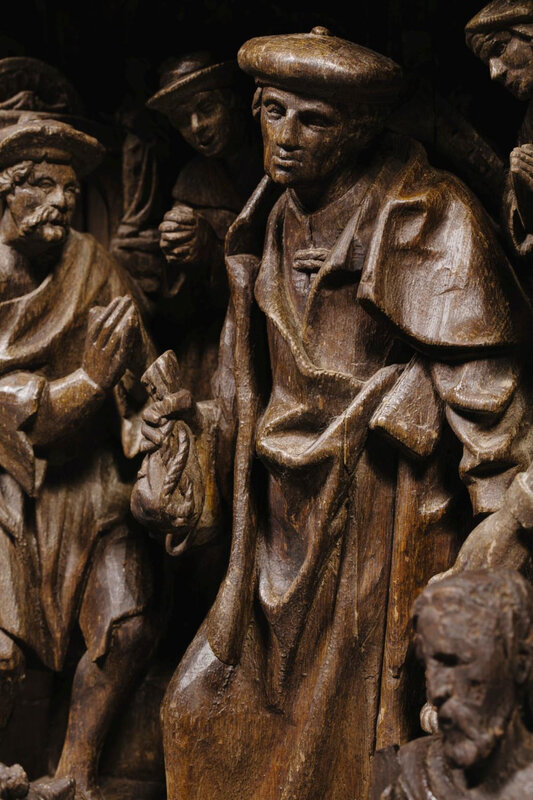


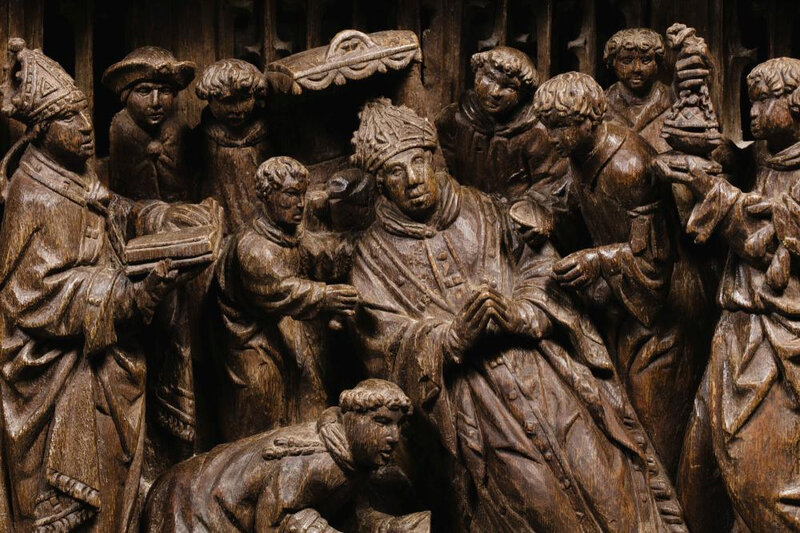



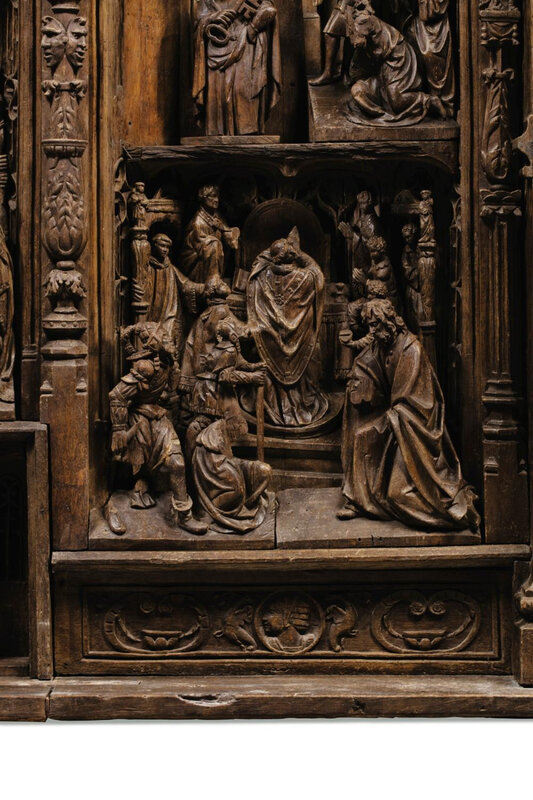
















/http%3A%2F%2Fstorage.canalblog.com%2F79%2F34%2F119589%2F72613012_o.jpg)
/image%2F1371349%2F20240425%2Fob_c453b7_439605604-1657274835042529-47869416345.jpg)
/image%2F1371349%2F20240425%2Fob_59c6f0_440358655-1657722021664477-71089985267.jpg)
/image%2F1371349%2F20240425%2Fob_07a28e_440353390-1657720444997968-29046181244.jpg)